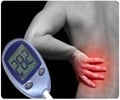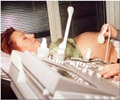Children with type 1 diabetes may be able to monitor their blood sugar around the clock without painful sticks to draw blood for their glucose
Children with type 1 diabetes may be able to monitor their blood sugar around the clock without painful sticks to draw blood for their glucose monitors.
A new device that measures blood sugar by testing the glucose concentration of fluid under the skin -- drawn out by a transdermal low-level electric current -- and then sounding an alarm when levels are abnormal is safe and effective even in children under age 7.Studies were conducted on the effectiveness of the device and it was found out that it might be an effective replacement for frequent skin-puncture blood sampling. The study involved 46 children, 15 under age 7 and the rest between ages 7 and 17 and was focused on how the children responded to the device. All the children wore the device on their forearm, ankle, or upper arm for two 15-hour daytime and two 15-hour nighttime periods each week for three months. In parallel, they also underwent periodic finger prick monitoring using their home blood glucose monitor.
Promising results were found out at the end of the study. Of the 42-hypoglycemia episodes detected by the GW2B, 33 were confirmed by the standard finger prick test. However, about 35 percent of the children dropped out of the study after six weeks due to irritation from the device or because they were unduly disturbed by the alarms. In conclusion additional studies might be needed before this instrument is brought into the market.











